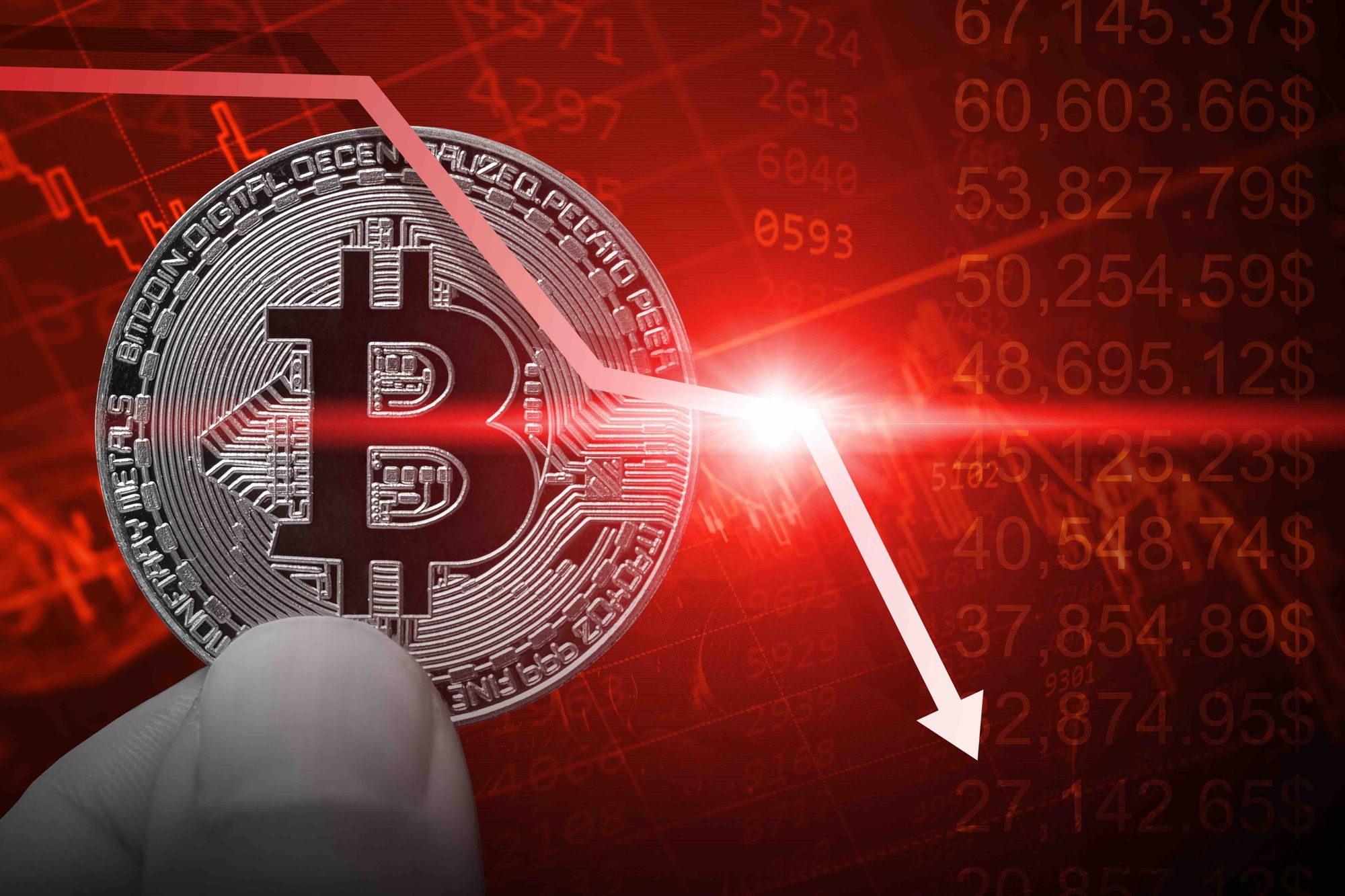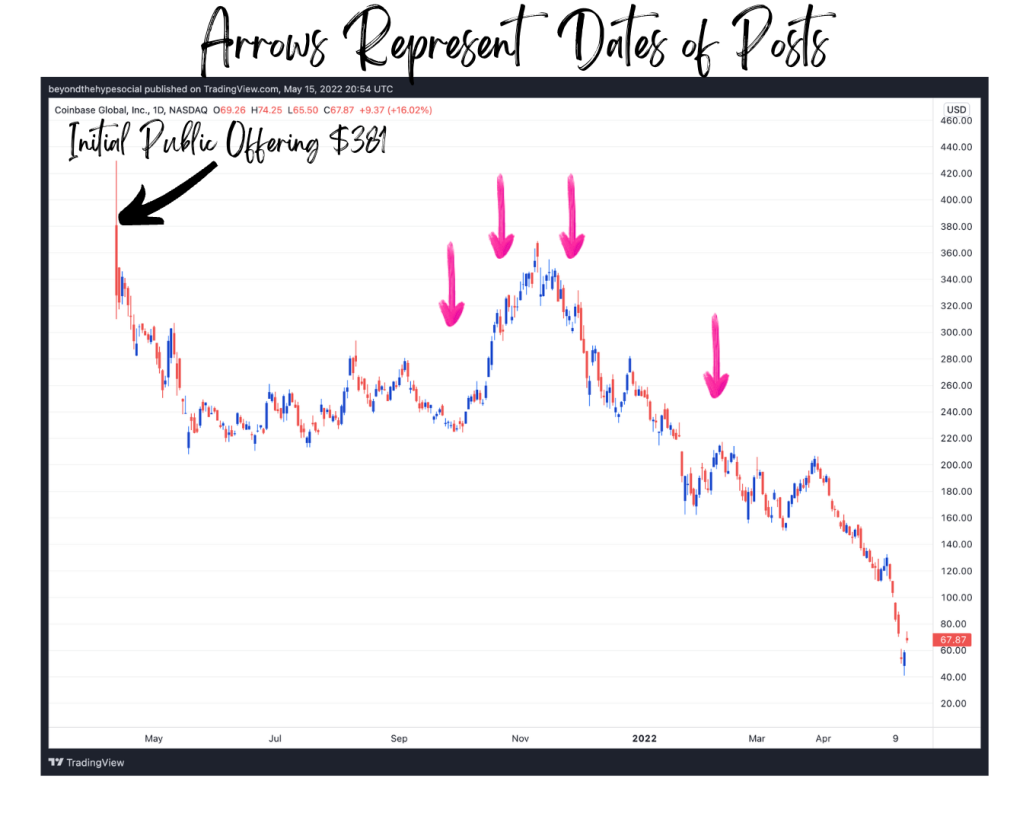Prospection.
Prospection is the action of looking forward mentally; anticipation; consideration of the future; foresight, and planning; an instance of this.

“Anticipate the difficult by managing the easy.” – Lao Tzu.
“Traders’ flight from risky investments has halved the price of bitcoin and other cryptocurrencies, wiping out more than $1 trillion worth of digital money since November.” According to the Peter Santilli and Corrie Driebusch writing for the Wall Street Journal (May 12, 2022)
They continued, “wild swings are fairly common with cryptocurrencies, but even seasoned investors were left reeling as bitcoin dropped 29% over a seven-day losing streak that just ended as a Stablecoin—one part of the crypto world that touted its stability—unexpectedly crashed.”

That’s exactly where I want to press the pause button on the prevailing narrative. Not to disparage the writers of the lines above but it appears most commentators make a living out of explaining “what happened” not lending guidance to getting your kids out of the street before they get run over.
From Flash Crash (Sep 16, 2021) “For the more inquisitive of us, the takeaway from the $100 billion dollar debacle was dirt simple. Highly speculative and thinly bid markets are fraught with danger. Losses can and will be dramatic, account-ending, and soul-ripping. Therefore, “caveat emptor.” Buyer beware.”
From Bitcoin Fever (Oct 24, 2022) “Only time will tell how web 3.0, Defi, and the cryptos will fair. In the short run, I am a seller of Bitcoin, not an active short from Thursday’s close of business. I am not afraid of missing out by taking profits in Bitcoin or any of the other cryptos after Friday’s close on a weekly chart. Stay tuned.”
From Bitcoin Fever: Revisited (Nov 26, 2022) “At Beyond the Hype, our Predictive Markets Model (PMM) works off a shared awareness signal (SAS) which indicated a $63,000 sell on October 23, 2021, and a $65,000 sell on November 11, 2021.“
From Bitcoin 2022 (Feb 3, 2022) “At Beyond the Hype Media, we told our readers about the peril of Bitcoin at $65,000 with enough time for me to write an article about our recommendation and post it to Twitter, Instagram, and our website with a few extra days for you to execute. We warned Bitcoiners of the bubble and its impending pop!”
“Please note, I am not building or offering a trading or advisory business. I am a social scientist writing about cultural issues, trends, and thinking. My theories are being tested in the financial markets as a “proof of concept”. Nothing more. Come along for the ride if you wish. I will do my best to answer your questions and share our insights.”

As a social scientist, I frequently engage in prospection. Webster’s dictionary defines prospection as the action of looking forward mentally; anticipation; consideration of the future; foresight, and planning; an instance of this. Looking forward, I saw a buying fever (a potential bubble forming) driven by very few facts.
When a market continues to rise there are very detractors. Upward price movement in an openly traded market is a defacto “crowd confidence indicator”. To speak out is to challenge the crowd. And, of course, the crowd’s price is always the best and brightest indicator of truth. Price certainly reflects beliefs, but crowds and individuals are hardly rational.
The old adage goes, “The market can remain irrational longer than you can remain solvent.”
Allow me to use a recent example ripped from the pages of the current financial pages. The biggest cryptocurrency exchange in the U.S. said it was bleeding users, reflecting continued destruction in the crypto market and investors’ unease about risky assets.
Coinbase Global Inc. said Tuesday that it lost hundreds of millions of dollars in the first quarter, sending the stock tumbling in after-hours trading. Following the after-market report, shares traded around $61—a far cry from the $381 where the stock opened trading when it went public a little over a year ago.
A year ago, the smart money bought Coinbase to the market in a fervor over the future of cryptocurrency trading pricing it at $381 a share. In the early hours of trading, the crowd paid from $381 to $425 a share for Coinbase. The smart money crowd was dead wrong.

Days before my February 4th post, crypto stalwart Tyler Winklevoss, co-founder, and chief executive officer of Gemini Trust Co., took to Twitter to assure his 1 million followers.

“Bitcoin is not a faster horse, it is a flying car.” Funny, I thought we were talking about digital currency. Bitcoin was trading at $45,000 as Mr. Winklevoss made his pronouncement. In early Sunday (May 15th) trading BTC is trading at around $30,000. It seems no one wants to buck the prevailing media narratives especially when the market price supports that narrative. That’s not a healthy public square.
My prospection into Bitcoin’s cliff dive was based upon several rock-solid social science theories. The first is called, social proof, which is “a psychological phenomenon where people assume the actions of others reflect the correct behavior in a situation, driven by the assumption that others possess more information about the situation.” Following the leader without critical thought is also related to herding.
The idea of crowd herding has a long history in philosophy and crowd psychology dating back to at least 1916 with Wilford Trotter’s Instincts of the Herd in Peace and War. “The emergence of a collective decision in the market is identified as one of the possible causes of market instabilities, the derogatory word herding.” It is particularly relevant in finance, where it has been discussed in relation to the collective irrationality of investors, including stock market bubbles (Banerjee, 1992). In other areas of decision-making, such as politics, science, and popular culture, herd behavior is sometimes referred to as ‘information cascades’ (Bikhchandi et al., 1992). Herding behavior can be increased by various factors, such as fear (e.g. Economou et al., 2018), uncertainty (e.g. Lin, 2018), or a shared identity of decision-makers (e.g. Berger et al., 2018).
The idea of a self-affirming narrative, like cryptocurrencies blossoming into a full-fledge speculative bubble, is not new. Herding in spurious investments, like Tulip Bulbs or Bitcoin, can and does cause a form of mass psychosis resulting in speculative excesses without substance. When those bubbles pop, they are vicious. The history of financial euphoria and my 40 years of experience served as the guidebook to my prospection.
This article is designed to be a post-mortem of the last six months of Bitcoin’s price action, examining what I got right and where I missed the mark. After a long drop in Bitcoin’s price, I study crowd dynamics for the next move. Assuming the current incarnation of Bitcoin has a future, I am looking for a buying opportunity, not a sell.
Until next time. Travel safe.
References & Endnotes:
Banerjee, A. (1992). A simple model of herd behavior. Quarterly Journal of Economics, 107, 797-817.
Berger, S., Feldhaus, C., & Ockenfels, A. (2018). A shared identity promotes herding in an information cascade game. Journal of the Economic Science Association, 4(1), 63-72.
Bikhchandi, S., Hirschleifer, D., & Welch, I. (1992). A theory of fads, fashion, custom, and cultural change as informational cascades. Journal of Political Economy, 100, 992-1026.
Economou, F., Hassapis, C., & Philippas, N. (2018). Investors’ fear and herding in the stock market. Applied Economics, 50(34-35), 3654-3663.
Lin, M. C. (2018). The impact of aggregate uncertainty on herding in analysts’ stock recommendations. International Review of Financial Analysis, 57, 90-105.

